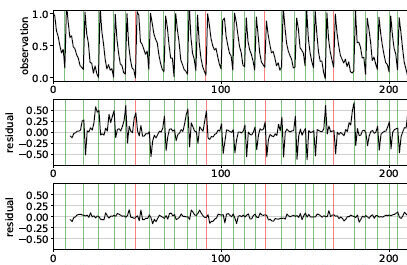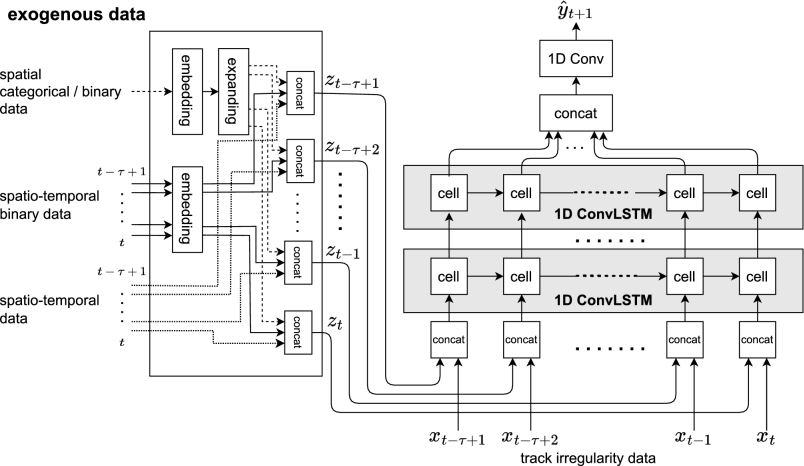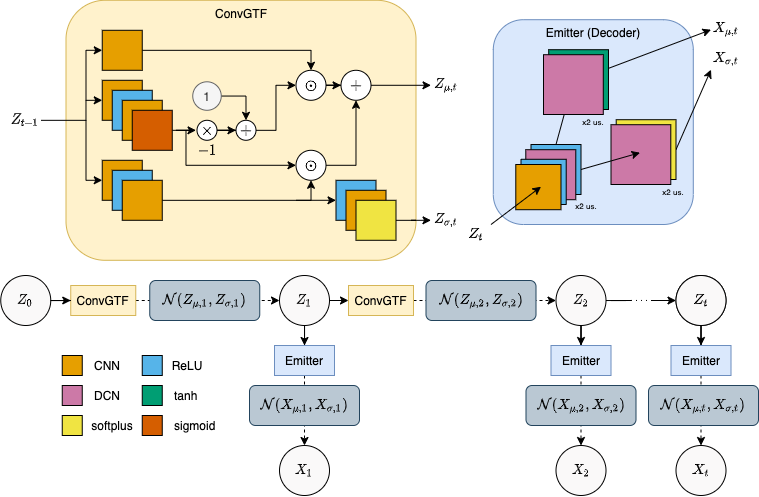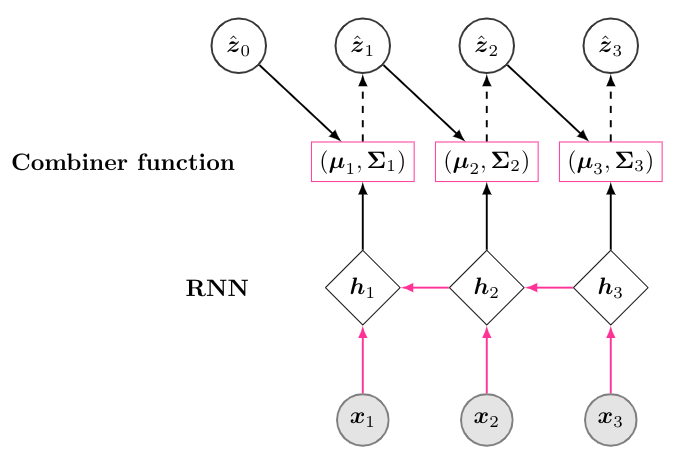Deep Models for Spatiotemporal Forecasting
Forecasting Degradation Recovery Process with Binary Maintenance Intervention Records
We considered the problem of forecasting the degradation recovery process of civil structures for prognosis and health management. In this process, structural health degrades over time but recovers when a maintenance intervention is performed. Maintenance interventions are typically recorded in terms of date and type. Such records can be represented as binary time series. Using binary maintenance intervention records, we forecast the process by using Long Short-Term Memory (LSTM). In this study, we experimentally examined how to feed binary time series data into LSTM. To this end, we compared the concatenation and reinitialization methods. The former is used to concatenate maintenance intervention records and health data and feed them into LSTM. The latter is used to reinitialize the LSTM internal memory when maintenance intervention is performed. The experimental results with the synthetic data revealed that the concatenation method outperformed the reinitialization method.

Katsuya Kosukegawa and Kazuhiko Kawamoto, Long Short-Team Memory for Forecasting Degradation Recovery Process with Binary Maintenance Intervention Records, IEICE Transactions on Fundamentals of Electronics, Communications and Computer Sciences, Article ID 2023EAL2019, Advance online publication, 2023 [paper].
Spatiotemporal forecasting of track geometry irregularities with exogenous factors
To ensure the safety of railroad operations, it is important to monitor and forecast track geometry irregularities. A higher safety requires forecasting with higher spatiotemporal frequencies, which in turn requires capturing spatial correlations. Additionally, track geometry irregularities are influenced by multiple exogenous factors. In this study, a method is proposed to forecast one type of track geometry irregularity, vertical alignment, by incorporating spatial and exogenous factor calculations. The proposed method embeds exogenous factors and captures spatiotemporal correlations using a convolutional long short-term memory. The proposed method is also experimentally compared with other methods in terms of the forecasting performance. Additionally, an ablation study on exogenous factors is conducted to examine their individual contributions to the forecasting performance. The results reveal that spatial calculations and maintenance record data improve the forecasting of vertical alignment.

Katsuya Kosukegawa, Yasukuni Mori, Hiroki Suyari, Kazuhiko Kawamoto, Spatiotemporal forecasting of vertical track alignment with exogenous factors, Scientific Reports 13, 2354, 2023 [paper][GitHub].
2D Convolutional Neural Markov Models for Spatiotemporal Sequence Forecasting
Recent approaches to time series forecasting, especially forecasting spatiotemporal sequences, have leveraged the approximation power of deep neural networks to model the complexity of such sequences, specifically approaches that are based on recurrent neural networks. Still, as spatiotemporal sequences that arise in the real world are noisy and chaotic, modeling approaches that utilize probabilistic temporal models, such as deep Markov models (DMMs), are favorable because of their ability to model uncertainty, increasing their robustness to noise. However, approaches based on DMMs do not maintain the spatial characteristics of spatiotemporal sequences, with most of the approaches converting the observed input into 1D data halfway through the model. To solve this, we propose a model that retains the spatial aspect of the target sequence with a DMM that consists of 2D convolutional neural networks. We then show the robustness of our method to data with large variance compared with naive forecast, vanilla DMM, and convolutional long short-term memory (LSTM) using synthetic data, even outperforming the DNN models over a longer forecast period. We also point out the limitations of our model when forecasting real-world precipitation data and the possible future work that can be done to address these limitations, along with additional future research potential.

Calvin Janitra Halim and Kazuhiko Kawamoto, 2D Convolutional Neural Markov Models for Spatiotemporal Sequence Forecasting, Sensors 20, no. 15: 4195, 2020 [paper].
Deep Markov Models for Data Assimilation in Chaotic Dynamical Systems
Recently, the use of deep learning in data assimilation has been gaining research attention. For instance, the time-series deep Markov model has been proposed along with an inference network trained using variational inference. However, the original proposal did not fully leverage the model ability for data assimilation. Therefore, we aim to evaluate the suitability of a deep Markov model and its inference network for a chaotic dynamical system, which is a common problem in data assimilation. We evaluate the model under various generative conditions. The results show that when information about part of the target model is known, the model has comparable performance to a smoothed unscented Kalman filter, even under the presence of process and observation noise.

Calvin Janitra Halim and Kazuhiko Kawamoto, Deep Markov Models for Data Assimilation in Chaotic Dynamical Systems, Advances in Artificial Intelligence, Vol. 1128, pp. 37-44, Springer International Publishing, 2020 [paper].
